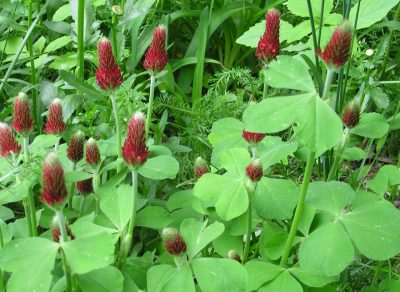UPCOMING COMPOSTING WEBINAR/WORKSHOP
/4 Comments/in Gardening/by Lee ReichPresentation by Lee Reich (MS, PhD, researcher in soil and plants for the USDA and Cornell University, decade-long composter, and farmdener*):
Learn the why and the how of making a compost that grows healthy and nutritious plants, everything from designing an enclosure to what to add (and what not to add) to what can go wrong (and how to right it). Don’t bother stuffing old tomato stalks, grass clippings, and leaves into plastic bags; just compost them! The same goes for kitchen waste. Learn what free materials are available for composting. “Bring” your questions about this important topic.
Also covered will be the best ways to use your “gourmet compost.” Good compost is fundamental to good gardening; it put the “organic” into organic gardening, making healthy soil and healthy plants.
Whether your interest is to produce a material that’s good for your garden or to recycle kitchen and garden waste, this workshop will teach you all you need to know to make good compost.
Space for this workshop/webinar is limited so registration is necessary. Sign up soon to assure yourself a space.
Date: September 23, 2020
Time: 7-8:30 pm EST
Cost: $35
Register for this webinar at:
https://us02web.zoom.us/webinar/register/WN_XmctJm_9QLWlKmW4hK1Lhg
After registering, you will receive a confirmation email containing information about joining the webinar.
*A farmdener is more than a gardener and less than a farmer.
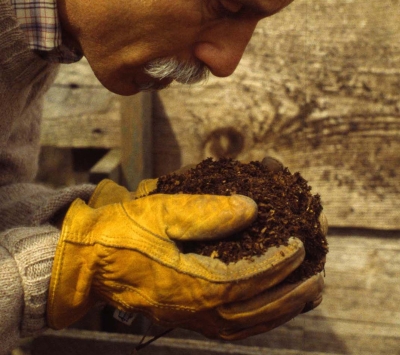
SICKNESS, MY CORN NOT ME
/11 Comments/in Gardening/by Lee ReichAn Interesting Puzzle Unfolds
Sudoko and Scrabble and other games and puzzles offer endless hours of entertainment and stimulation. Or so I hear. I get those challenges and rewards from my garden. Case in point is a bed of sweet corn which has been stunted all season long and then last week, almost suddenly, all the plants’ leaves turn sickly as well. Needless to say, ears are developing poorly or not at all. Why, I asked?
I have to backtrack. Each year I plant 4 beds of corn, each about 20 feet long, which supplies plenty of ears for fresh eating and freezing. I spread out the harvest season by planting a new bed every two weeks after the previous planting. Each bed, like other beds in my vegetable gardens, is spread each year with a one-inch depth of compost to maintain fertility (as well as other benefits).
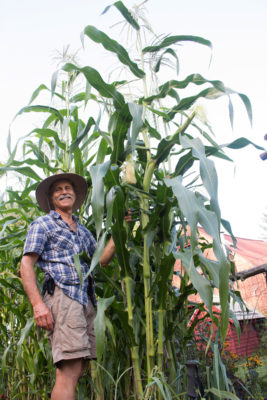
At first I thought perhaps there was a fertility problem with the stunted bed. But, as I wrote, all the beds get the same fertility treatment. Watering is also the same, via drip irrigation. And early-season Chinese cabbage plants sharing that bed with the corn look fine and healthy.
The suddenly sickly leaves were very telling, with yellow streaks that turned to tan, dead spots. It didn’t take long to nail down the cause to Stewart’s Wilt, also known as bacterial wilt. Two culprits are at work here. The first is a bacterium (Pantoea stewartii), which needs a friend to actually get inside and infect a corn plant. That friend is the corn flea beetle (Chaetocnema pulicaria). The beetles overwinter as adults, with the bacteria in their gut, and emerge in spring to feed on and infect corn plants. Seeds from infected plants can also grow up infected, although this is relatively rare.
Other evidence supports my finger-pointing. The corn flea beetle doesn’t tolerate cold weather well, making the disease more prevalent after milder winters. Check. Last winter was the warmest winter in decades. Stewart’s Wilt is also most prevalent in hot summers and dry summers. Check. Check. One of the most susceptible varieties is Golden Bantam, which I grow. Check.

Disease development on leaves
Fertility can play a role, with ammonium nitrogen and high phosphorus levels favoring the disease, and high calcium and potassium decreasing plant susceptibility. Probably not a factor; phosphorus level is high in my beds, as are levels of potassium and calcium. Based on growth in the rest of the garden, there’s no reason to suspect ammonium levels are too high.
Why This Year?
Putting a name to the problem is not the end of my puzzle.
One remaining question is why the one bed was so severely infected, and not the other three. Golden Bantam is an heirloom variety, with seed saved each year — for the past 100 plus years — from self-pollinated plants. Although basically the same, all Golden Bantam plants are not clones, that is, genetically identical. Slight differences could exist between “lines.” I had more than one source of Golden Bantam seed this year. I always assumed that all the Golden Bantams are sufficiently identical, so I never record which source or sources I planted in each bed. It could be that one bed was planted with seed of a more susceptible line.

Another possibility for the unique performance of the last bed could be that it’s development coincided with the flea beetle’s development such that it was rendered more susceptible. Earlier ripening corn generally is less susceptible than later ripening ones.
I’m tending toward the theory that this growing season presented a unique “perfect storm” of conditions that favored the disease.
Looking Forward
The most important part of solving this puzzle, of course, is: what to do? I don’t particularly like the flavor or texture of modern supersweet hybrids, even if many are wilt resistant. Some popular old varieties — Country Gentleman and Stowell Evergreen, for example — are wilt resistant. But — and not to be a picky eater — those varieties are white corns; I like yellow corns.
More than that, I like Golden Bantam sweet corn. This variety was the most popular variety early in the 20th century. Although the pathogen was identified by, of course, F. C. Stewart in Long Island, New York in 1895, not much could be done to control its devastating effects until resistant hybrids were developed. The first of these was bred from two lines of Golden Bantam, in 1923. It wasn’t long before 70 tp 80% of canned corn was of this variety, Golden Cross Bantam.
Golden Cross Bantam is still available today. The plants are sturdier, more productive, more uniform in ripening than Golden Bantam, and wilt resistant. I’ll plant it next year. (I may have accidentally grown it a few years ago. Given Golden Bantam’s popularity, “Bantam” was included in the names of many hybrids and genetic lines. For more about my experience see my blog post from September 1, 2016.) I hope Golden Cross Bantam, seed of which I already ordered, tastes as good as my original Golden Bantam.
I’ll also plant a few hills, labeled as to seed source, of the real Golden Bantam to see if Stewart’s disease appears and, if so, if severity varies between those sources.
Puzzle complete, till next year.

Golden Bantam, a hit since 1906
READY FOR 2021
/5 Comments/in Books, Planning, Soil, Vegetables/by Lee ReichWhy Now?
For the past week or so I’ve been getting parts of the garden ready for next year. Too soon, you say? No, says I.
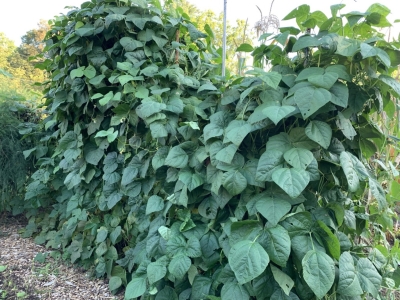
Pole beans
A bed of corn and a bed of bush beans are finished for the season. Not that that’s the end of either vegetable. I planted four beds of corn, each two weeks after the previous, and the two remaining beds will be providing ears of fresh Golden Bantam — a hundred year old variety with rich, corny flavor — well into September.
The bed of bush beans will be superseded by a bed of pole beans, planted at the same time. Bush beans start bearing early but peter out after a couple of harvests. Pole beans are slower to get going, but once they do, they keep up a quickening pace until slowed, then stopped, by cold weather.
Why, you may ask, ready those beds now for eight months hence? One reason is that the garden is always such a flurry of activity in spring that I welcome one less thing that needs doing then. Also, part of garden preparation is thorough weeding (which I also keep up with, though less thoroughly, all season long). Any weeds checked now means less weed seed to spread around the garden and, in the case of perennial weeds, less opportunity to gain a foothold.

And later in the season…
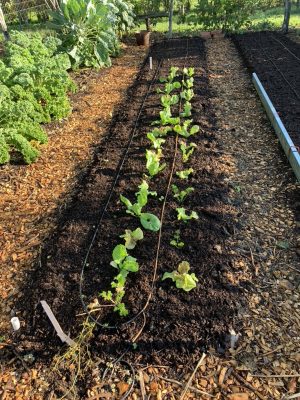
And, later in the season
And beds prepared now need not sit idle till spring. Right after getting the old bean bed ready for spring, I’ll plant it with vegetables that thrive in the cool weather of fall, vegetables such as lettuce, endive, turnips, Chinese cabbage, and winter radishes. The bed will be ready as soon as fall vegetables are harvested and out of the way.
And How? Simple.
No magic potions or secret techniques ready my beds now for next year. What’s needed, besides weeding and fertilizing, is to maintain or increase levels of soil organic matter. Organic matter is integral to good fertility, maintaining a diverse population of beneficial soil microbes, and improving soil aeration and moisture retention. It’s what put the “organic” into organic gardening.
The way I provide all this can be summed up in one word: compost.
Okay, there is more to it. My vegetable garden is laid out in beds that are 3 feet wide with 18 inch wide paths between them (and a 5 foot wide path up the middle of the garden for rolling in cartfuls of compost). Soil in the beds has not been tilled or otherwise unduly disturbed for decades, which has many benefits that I delve into in my book Weedless Gardening.
First step in getting the garden ready for next year is to remove all existing plants, be they corn, bean, or weed plants. I excise most plants, including weeds, by grabbing each near its base and giving it a slight twist to sever it from its fine roots, which are left in place. Coaxing with my Hori-Hori knife is sometimes needed. Corn plants definitely need coaxing, which I do by digging straight down around the base of each plant and then giving it a yank. After all this, I smooth out the ground, if necessary, with the tines of a rake or pitchfork.
A one inch depth of finished compost should provide all that intensively grown vegetables require for a whole season. That one inch of compost is laid down like a rich icing right on top of the bed. Finished!
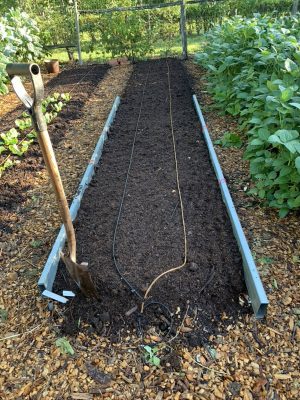
Okay, there’s sometimes a little more to it. I noticed weak growth in one of the later corn beds, possibly due to nitrogen deficiency, although untimely, temporary malfunction of my drip irrigation system at a critical growth stage for the corn is another possibility. Just too make sure, I will sprinkle some organic nitrogen fertilizer (soybean meal) in that bed when I prepare it.
(I could test the soil for some other nutrient deficiency, but after years of using compost made from diverse feedstuffs, some other nutrient deficiency is doubtful. There’s no good test for nitrogen because of its evanescence in the soil.)
Okay, there’s sometimes even a little more to my soil prep. If a bed is finished for the season and I have enough cleared beds for all the cool season vegetables, I could just prepare the bed, as above, and that would be the end of the story. But I don’t like to look at bare ground, so beds cleared and prepared early enough in the season, which is about the end of September here in Zone 5, get planted with a cover crop. Cover crops protect soil from wind and water erosion, latch onto nutrients that would otherwise leach down and out of the ground, and crumble the soil to a fine tilth with their roots. And going into winter, I’d rather look at a lush, green cover crop than bare ground.
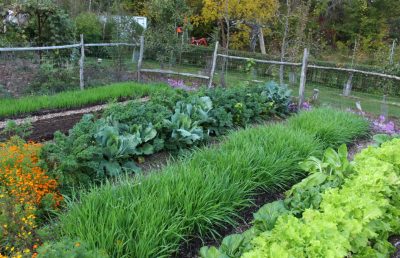
Cover crop in autumn
My usual cover crop of choice is oats or barley. Both thrive in autumn’s cool, moist weather. They mesh well with no-till because they winterkill here in Zone 5.
This year, especially for my beds of corn, which is a nitrogen-hungry plant, I’ll mix crimson clover in with the oats or barley. As a legume, the clover will enrich the ground with extra nitrogen that it extracts from the air. And the vivid crimson flower heads, sitting atop stalks like lolliopops, will look nice.
